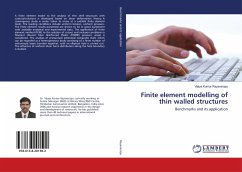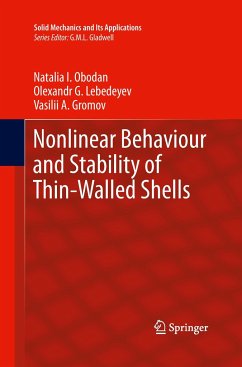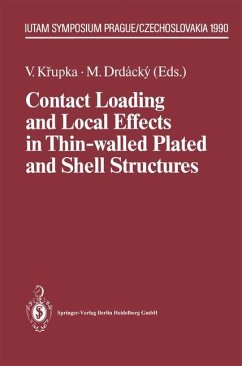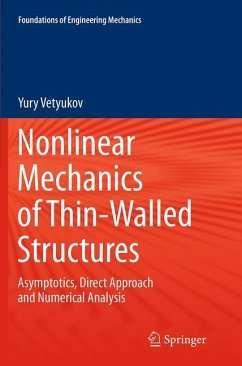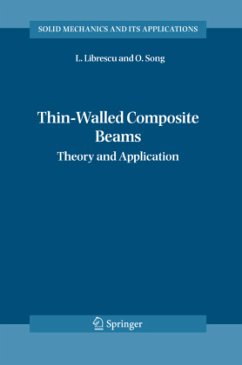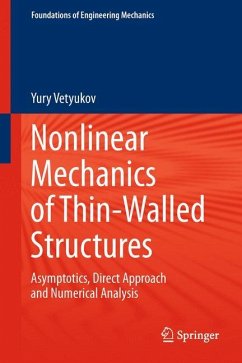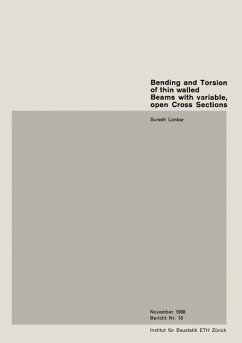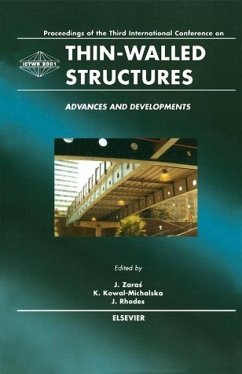
Finite Element Formulations for Thin-walled Members
Analysis of slender and squat members with non-symmetric cross-sections, abrupt sectional changes, eccentric boundary conditions and offset loading
Versandkostenfrei!
Versandfertig in 6-10 Tagen
52,99 €
inkl. MwSt.

PAYBACK Punkte
26 °P sammeln!
Conventional techniques introduce several modeling complications and limitations for the analysis of thin-walled members when the incorporation of the shear deformation effects are needed, eccentric supports or abrupt cross-sectional changes exist or external loads are offset from the member centroid or the shear centre. This state of the art study introduces novel techniques to overcome these difficulties and provides easy-to-use finite element formulations for engineers and researchers. Case studies show the efficacy and accuracy of the developed formulations for the analysis of slender as w...
Conventional techniques introduce several modeling complications and limitations for the analysis of thin-walled members when the incorporation of the shear deformation effects are needed, eccentric supports or abrupt cross-sectional changes exist or external loads are offset from the member centroid or the shear centre. This state of the art study introduces novel techniques to overcome these difficulties and provides easy-to-use finite element formulations for engineers and researchers. Case studies show the efficacy and accuracy of the developed formulations for the analysis of slender as well as squat members with non-symmetric cross-sections, rectangular holes, coped flanges or longitudinal stiffeners. Comprehensive literature review and rigorous analyses of the convergence characteristics and accuracy of the proposed finite elements are included.



